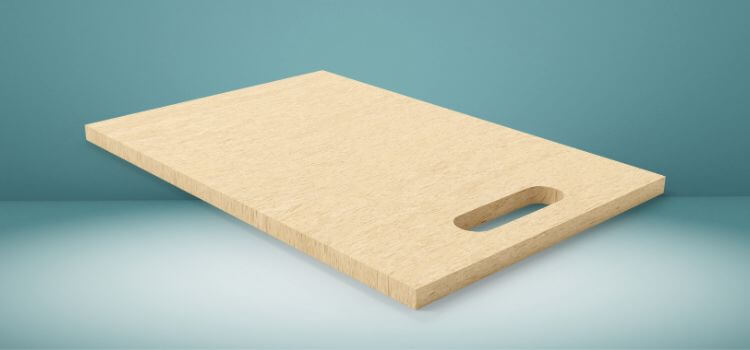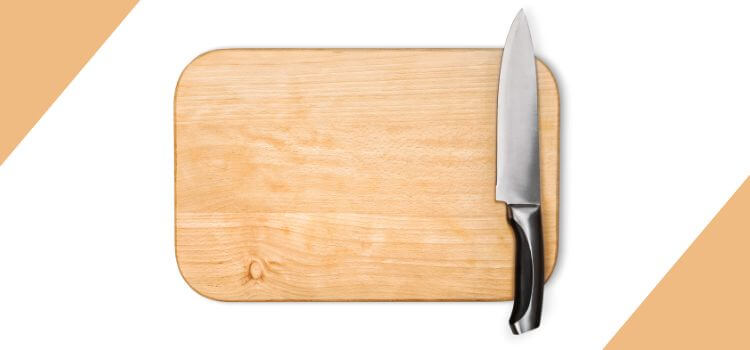As an Amazon Associate, I earn from qualifying purchases

Ash wood is renowned for its versatility and strength, making it a popular choice across various industries. From furniture to sporting goods like baseball bats, ash wood has earned its place due to its durability and attractive appearance.
But how does it hold up when transformed into a cutting board? In this article, we’ll explore whether ash wood is a viable option for cutting boards, examining its characteristics, benefits, drawbacks, and how it compares to other woods commonly used in the kitchen.
Properties of Ash Wood
Ash wood is known for its impressive hardness and unique grain structure. With a Janka hardness rating of about 1,320, ash is considered a hardwood, making it tough enough to handle frequent use without too much wear. Its light color and straight grain give it a clean, appealing look that fits well in both traditional and modern kitchen aesthetics.
The wood’s resilience makes it particularly suitable for applications that require strength and shock resistance. Its natural elasticity also contributes to its ability to withstand impact, which is why it’s a favorite for sports equipment. However, when considered for a cutting board, these properties suggest that ash could provide a durable and stable surface for cutting tasks.
Advantages of Ash for Cutting Boards
- Strength and Durability: Ash wood cutting boards are robust and can handle heavy use, making them ideal for frequent cooks. They resist knife marks better than softer woods, ensuring longevity.
- Aesthetic Appeal: The attractive grain pattern of ash adds elegance to any kitchen. Its natural beauty can enhance the overall decor.
- Customizable Design: Ash is easily customizable, allowing for unique designs that cater to personal preferences and styles.
- Craftsmanship: Working with ash is straightforward, enabling detailed craftsmanship. Whether you want a simple board or one with intricate carvings, ash serves as a solid foundation for creativity.
- Versatile Finishing Options: Ash pairs well with various finishes, allowing for different looks—from a natural matte finish to a polished sheen—enhancing its visual appeal in any kitchen setting.
Disadvantages of Ash for Cutting Boards
- Staining and Discoloration: Ash cutting boards can stain or discolor if not properly maintained. Their lighter color makes them more prone to visible stains from certain foods compared to darker woods.
- Maintenance Requirements: Regular care is essential to maintain an ash cutting board. This includes oiling to prevent the wood from drying out and cracking. Without proper oiling, the board can become brittle over time, increasing the risk of splits or breaks.
- Porosity Concerns: Ash is slightly more porous than some other hardwoods, which means it may harbor bacteria if not thoroughly cleaned and sanitized after each use. Proper cleaning is crucial to ensure food safety.
Comparison with Other Woods

When comparing ash to other popular cutting board materials like maple, walnut, and bamboo, several factors come into play. Maple, for instance, is similarly hard but has a denser grain, offering better resistance to bacteria. Walnut is softer than ash, providing a more knife-friendly surface but requiring even more maintenance. Bamboo, while not a traditional hardwood, is environmentally friendly and quite durable, though it can be harder on knives.
In terms of cost, ash is generally more affordable than walnut but can be pricier than bamboo, making it a mid-range option financially. Availability is typically good, given its widespread use in other industries, ensuring that those interested in ash cutting boards can find them relatively easily.
Maintenance Tips
To keep an ash cutting board in top condition, routine maintenance is essential. Regular cleaning with mild soap and warm water, followed by immediate drying, will help prevent water absorption and bacteria growth. It’s important to avoid soaking the board or putting it in the dishwasher, as excessive moisture can cause warping or cracking.
Oiling the board with food-safe mineral oil or a beeswax conditioner every few weeks will help maintain its moisture resistance and protect against drying. If stains occur, a light sanding followed by re-oiling can restore its appearance. For those concerned about bacteria, a solution of vinegar and water can be used for sanitizing.
Conclusion
Ash wood offers a compelling option for cutting boards, combining strength and beauty with a reasonable level of maintenance. While it requires some care to prevent staining and ensure longevity, its durability and aesthetic appeal make it a suitable choice for many kitchens. Whether you’re drawn to its natural luster or its functional practicality, ash cutting boards can be a valuable addition to your culinary toolkit.
Ultimately, the decision to use ash comes down to personal preference and how much effort you’re willing to invest in upkeep. For those who appreciate the natural beauty of wood and don’t mind the extra care, ash can provide a reliable and visually pleasing surface for food preparation. If you’re considering an ash cutting board, weigh these factors carefully to determine if it’s the right fit for your kitchen needs.
FAQ
Does Ash make good boards?
Yes, ash makes good boards due to its strength, durability, and appealing grain pattern. It’s often used for furniture and flooring because it withstands wear and tear well. For cutting boards, its hardness offers a stable surface, though it requires regular maintenance to prevent drying and staining.
Does Ash make a good chopping block?
Ash can make a good chopping block thanks to its hardness and resilience. It handles heavy chopping tasks without significant wear. However, it needs regular oiling to maintain its integrity and prevent cracking. While it performs well, it may not be as bacteria-resistant as some denser woods.
Is Ash wood good for?
Ash wood is versatile and suitable for various uses, including furniture, sports equipment, and musical instruments, due to its strength and elasticity. It’s also popular in interior design for its aesthetic appeal. While excellent for many applications, regular maintenance is crucial to preserve its quality over time.
What is the best wood for a cutting board?
Maple is often considered the best wood for cutting boards due to its hardness, tight grain, and resistance to bacteria. It’s durable yet gentle on knives. Walnut is another great option, offering a softer surface and rich color. Bamboo is eco-friendly and durable, though harder on knives.
As an Amazon Associate, I earn from qualifying purchases